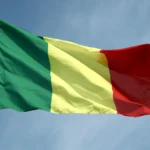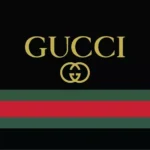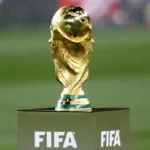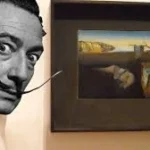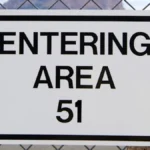
Eritrea, a country nestled in the Horn of Africa, boasts a rich tapestry of history, culture, and natural beauty. From ancient archaeological sites to vibrant traditions and diverse landscapes, Eritrea captivates with its unique blend of heritage and modernity. This introduction will delve into the fascinating facets of Eritrea, exploring its ancient past, cultural traditions, environmental treasures, and contemporary challenges. Join us on a journey through the captivating world of Eritrea, where ancient history meets modern resilience.
Ancient History: Eritrea is home to some of the oldest human skeletons ever discovered, with a 1-million-year-old skull unearthed in the Afar region in 1998. This finding challenged conventional understanding of human evolution, shedding light on early hominid populations in the region. The discovery underscores the significance of the Horn of Africa in the study of human origins and prehistoric migrations.
“New Rome” of Africa: Asmara, the capital of Eritrea, earned the nickname “New Rome” or “Africa’s Rome” due to its extensive Italian colonial architecture. During Mussolini’s fascist regime, the city’s design was heavily influenced, resulting in over 400 Italianate buildings. These structures, characterized by their elegant facades and grandeur, stand as enduring reminders of Eritrea’s colonial past and architectural heritage.
Coffee Culture: Coffee holds a central place in Eritrean culture, celebrated through traditional coffee ceremonies. These rituals involve roasting and grinding coffee beans over hot coals, followed by multiple rounds of pouring for guests. The ceremonies serve as social gatherings where communities come together to share stories, bond, and enjoy the rich flavors of freshly brewed coffee.
Nine Ethnic Groups: Eritrea is known for its cultural diversity, with nine recognized ethnic groups, each contributing to the country’s vibrant tapestry of traditions and languages. Among these groups, the Tigrinya people form the largest ethnic community, with their language serving as one of the country’s official languages alongside Arabic.
Unique Languages: Eritrea boasts a linguistic landscape rich in diversity, with nine indigenous languages spoken throughout the country. Tigrinya and Arabic hold official status, reflecting the multicultural fabric of Eritrean society. Many of these languages belong to the Afroasiatic language family, with historical ties to ancient languages like Hebrew, showcasing Eritrea’s linguistic heritage.
Red Sea Paradise: Eritrea’s coastline along the Red Sea offers breathtaking natural beauty, characterized by coral reefs, diverse marine life, and pristine beaches. This coastal paradise presents ample opportunities for diving, snorkeling, and other aquatic adventures, attracting enthusiasts from around the world to explore its underwater wonders.
Fierce Independence: Eritrea’s journey to independence culminated in 1993 after a protracted 30-year war with Ethiopia. The achievement marked a pivotal moment in the nation’s history, symbolizing the resilience and determination of its people to assert their sovereignty and chart their own path forward.
Underground Cathedrals: Eritrea is home to remarkable rock-hewn churches, a testament to the country’s ancient Christian heritage. Carved directly into cliffsides, these architectural marvels date back centuries and serve as sacred sites for worship and pilgrimage, offering a glimpse into Eritrea’s rich religious traditions.
Home to the Gelada Monkey: The Ethiopian highlands, which extend into Eritrea, provide a habitat for the unique Gelada monkey. Recognized for its distinctive chest patch and grazing behavior, this endangered species adds to the region’s biodiversity and ecological significance.
First Nation to Ban Plastic Bags: Eritrea’s proactive stance on environmental conservation was exemplified in 2005 when it became the first African nation to outlaw single-use plastic bags. This progressive measure aimed to mitigate environmental pollution and promote sustainable practices, setting a precedent for other countries to follow in the global fight against plastic waste.
Camel Caravan Culture: Camels have historically been integral to transportation and trade in Eritrea, with caravans still a common sight in certain regions. These sturdy animals traverse diverse terrain, facilitating the movement of goods and people across the country’s challenging landscapes.
Unique Calendar System: Eritrea follows the Julian calendar, which differs slightly from the Gregorian calendar used by most of the world. As a result, the Eritrean New Year falls on January 6th, reflecting the country’s adherence to its distinct calendar system.
Military Service: Eritrea mandates national service for all citizens following high school, regardless of gender. This service can extend for 18 months or more, playing a significant role in national defense and fostering a sense of duty among Eritrean youth.
Rich Archaeological Sites: Eritrea is home to numerous archaeological sites that offer insights into its ancient kingdoms and civilizations. These sites, ranging from ancient settlements to historic ruins, provide valuable clues about the region’s past and cultural evolution.
Music and Dance: Music and dance are deeply ingrained in Eritrean culture, serving as expressions of joy, celebration, and identity. Traditional instruments such as the krar and kebero accompany lively performances that reflect the diversity of Eritrea’s ethnic groups.
Rich Literary Heritage: Eritrea boasts a vibrant literary tradition, encompassing both oral storytelling and written literature in various languages. This heritage reflects the richness of Eritrean folklore, history, and cultural narratives.
Endangered Languages: Several Eritrean languages are classified as endangered due to a decline in speakers. Efforts to preserve and promote these languages are underway to safeguard the cultural heritage they represent.
Textile Traditions: Eritrean textiles are renowned for their vibrant colors and intricate weaving techniques, serving as symbols of cultural identity and heritage. These textiles are used in ceremonial attire, everyday clothing, and as decorative items, showcasing Eritrea’s artisanal craftsmanship.
Challenging Terrain: Eritrea’s landscape encompasses mountains, plateaus, and coastal plains, presenting geographical challenges and opportunities. Mount Soira, the country’s highest point, rises over 10,000 feet, while coastal areas offer fertile land and access to the Red Sea.
Challenges of War: The prolonged war for independence has left a lasting impact on Eritrea’s infrastructure, economy, and society. Reconstruction efforts continue as the country strives to overcome the legacy of conflict and build a brighter future for its citizens.
Resourceful People: Eritreans are renowned for their resilience and adaptability in the face of challenges. Despite limited resources and a history of struggle, they have demonstrated ingenuity and determination in building sustainable livelihoods and communities.
Strategic Location: Situated on the Red Sea, Eritrea occupies a strategically important position in the Horn of Africa. Its long coastline and key ports provide access to vital maritime trade routes, making it a significant player in regional geopolitics and commerce.
Developing Nation: Eritrea is classified as a low-income country by the World Bank, with ongoing efforts to improve its economy and infrastructure. Despite facing developmental challenges, the government and international partners are working to promote sustainable growth and prosperity.
Strict Press Laws: Eritrea has enacted stringent laws governing freedom of the press, leading to limited independent media presence in the country. Press freedom is restricted, with government-controlled outlets dominating the media landscape.
Looking to the Future: Despite its challenges, Eritrea is a nation with a rich history, culture, and potential for growth. Its people are committed to building a brighter future, leveraging their heritage and resilience to overcome obstacles and pursue progress and prosperity.
5 Frequently Asked Questions about Eritrea:
What is Eritrea’s most famous food?
Eritrea’s national dish is injera. It’s a large, sourdough flatbread made from teff flour, a tiny, ancient grain native to Ethiopia and Eritrea. Injera is a staple food and is eaten with various stews and vegetables during meals. The injera itself isn’t particularly flavorful, but it serves as a utensil to scoop up savory dishes. A traditional Eritrean meal involves sharing a large injera spread in the center of the table, with diners tearing off pieces and using them to grab bits of flavorful stews, vegetables, and lentils.
What is Eritrea’s political climate like?
Eritrea is a one-party state with the People’s Front for Democracy and Justice (PFDJ) as the only legally recognized political party. The country gained independence from Ethiopia in 1993, but hasn’t held multi-party elections since. Eritrea’s government is led by President Isaias Afwerki, who has been in power since independence. The country’s press freedoms are restricted, and Eritrea is often ranked low in press freedom indexes.
What are some interesting historical sites in Eritrea?
Eritrea boasts numerous historical sites showcasing its rich past. Here are two notable examples:
The city of Asmara: Nicknamed “Africa’s Rome,” Asmara is known for its well-preserved Italian colonial architecture. A UNESCO World Heritage Site, Asmara features a unique blend of European Art Deco and modernist styles with African influences. Visitors can explore numerous government buildings, cinemas, theaters, and private residences showcasing this architectural heritage.
The Dahlak Archipelago: This group of islands in the Red Sea offers a glimpse into Eritrea’s ancient history. Archaeological evidence suggests these islands were once part of the Aksumite Empire, a powerful kingdom that ruled parts of Northeast Africa and Yemen from the 4th century BC to the 10th century AD. Remnants of structures and artifacts from this period can still be found on some islands.
What is the significance of coffee in Eritrean culture?
Coffee is deeply ingrained in Eritrean social life. A traditional coffee ceremony, known as “bunna”, is a way of showing hospitality and a sign of respect. The ceremony involves roasting and grinding raw coffee beans over hot coals, followed by the brewing of strong coffee in a special pot called a “jebena.” The richly aromatic coffee is then poured for guests in small cups in multiple rounds. The ceremony can be quite elaborate and is a time for socializing, sharing stories, and strengthening community bonds.
What are some of the challenges Eritrea faces today?
Eritrea faces several challenges, including:
Economic development: Eritrea is a low-income country, and the long war for independence hindered its infrastructure development. The government is working to improve the economy by focusing on agriculture, mining, and tourism.
Press freedom and human rights: Eritrea’s government restricts press freedoms and faces criticism for its human rights record. There are concerns about limitations on freedom of speech, assembly, and movement.
Mandatory national service: Eritrea has mandatory national service for all citizens after high school. The length of service can be 18 months or more, which can impact educational and professional opportunities for young people.


